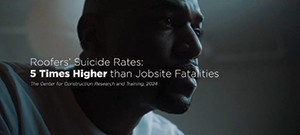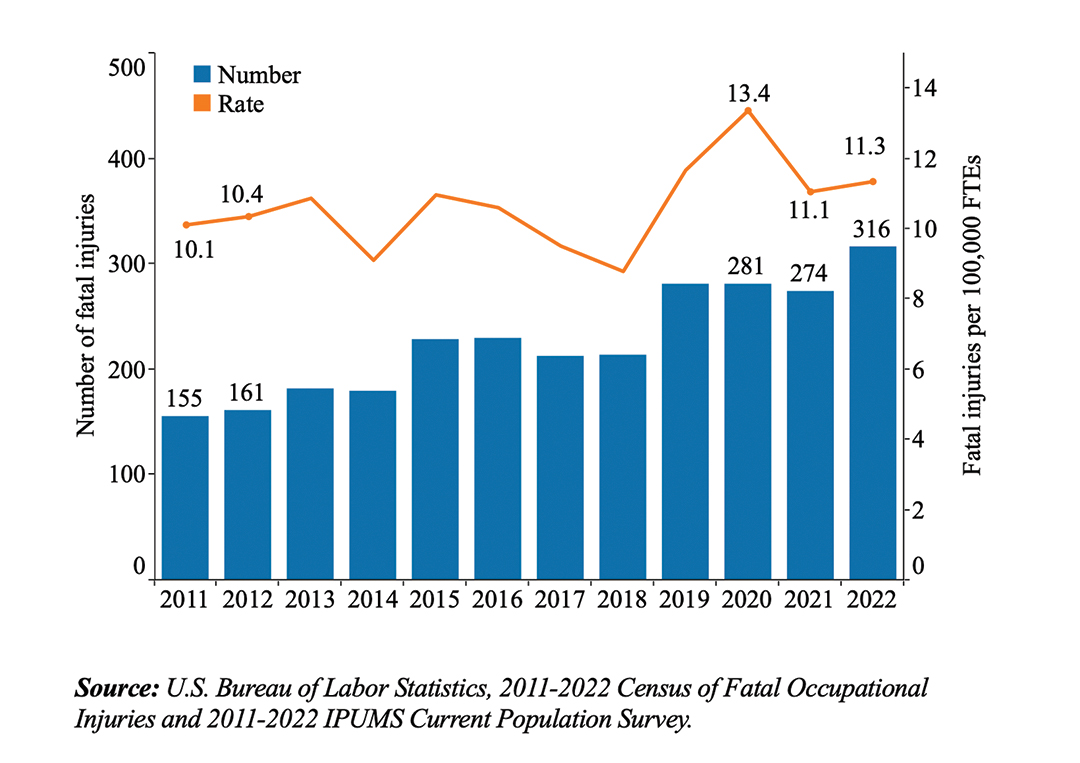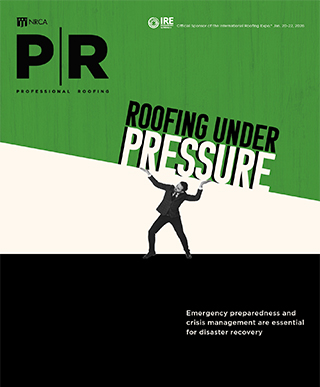NRCA debuts mental health awareness video

NRCA’s new video, “Be Tough Enough,” raises awareness regarding mental health and suicide prevention in the roofing industry and encourages roofing professionals to seek help when they are struggling. The video is available at betoughenough.org.
NRCA is committed to improving mental health awareness in the industry. Its mental health webpage offers a range of resources to enhance companies’ efforts to raise awareness, provide help and give support to mental health and suicide prevention in the roofing industry.
Resources include free hard-hat stickers, a suicide prevention fact sheet, a toolbox talk, a break room poster, educational programs and links to additional resources that can help you support the mental health and well-being of your employees.
Report shows Latino construction worker deaths doubled during 12-year period

A report from CPWR–The Center for Construction Research and Training shows fatalities among Latino construction workers more than doubled during a recent 12-year period, according to Safety+Health magazine.
Researchers examined 2011-22 data from the Census of Fatal Occupational Injuries and the IPUMS Current Population Survey and identified 408 fatal workplace injuries involving Latino construction workers in 2022, which is a 107.1% increase from 197 in 2011. During the same period, deaths among non-Latino construction workers rose from 583 to 679, an increase of 16.5%.
Additionally, from 2021 to 2022, 34.5% of nonfatal injuries involving days away from work and 47.3% of nonfatal injuries requiring days of job transfer or restriction involved Latino construction workers.
In 2023, 34% of workers in the industry were Latino compared with 16.5% in 2000. The construction occupations with the highest representation of Latino workers were drywall installation (75.2%), roofing (63.9%) and painting (62.5%).
NRCA’s classes, webinars and products offer information to ensure employees are properly trained and stay safe. Visit shop.nrca.net for more information.
Massachusetts tops 2024 USGBC ranking for LEED green building

Massachusetts topped the U.S. Green Building Council’s annual ranking of states for LEED green building in 2024 after ranking No. 3 on the list in 2023, according to USGBC.
States were ranked based on the number of LEED-certified square feet per capita in the state. In 2024, Massachusetts certified 132 LEED projects, surpassing 34 million square feet, equating to 4.95 LEED-certified square feet per person. The top 10 states certified 1,437 projects and more than 414 million gross square feet under LEED.
The states following Massachusetts in the Top 10 included Illinois, New York, Washington, Maryland, California, Texas, Nevada, Colorado and Virginia. USGBC notes Washington, D.C., would have had the highest ranking with 33.3 green square feet per capita and 111 green building projects, but it was not included because it is not a state.
Study explores long-term effects of heatstroke

According to the University of Florida, Gainesville, more than 100,000 people suffer a heat-related illness or injury each year in the U.S.
Results of a recent University of Florida study suggest heatstroke can lead to long-term organ damage and obesity.
View CPWR–The Center for Construction Research and Training’s report
For three months, researchers observed mice that were exposed to high levels of heat while on a running wheel. The mice also were given a high-fat Western diet after exposure.
Findings show the heat weakened the animals’ hearts, made them eat more and put on weight, and disrupted their metabolism of carbohydrates.
“The findings show how important it is to prevent and limit heat injury before it occurs … by hydrating and cooling down when symptoms like fatigue set in,” researchers said in the press release. “There is no established treatment for chronic heatstroke injury. But future research could help identify ways to limit the long-term damage in people.”
Thomas Clanton, lead study author and professor of applied physiology and kinesiology at the University of Florida, and his colleagues plan to follow people who have experienced heatstroke to further understand the factors that cause long-term problems.



